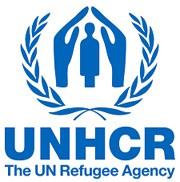Resource information
Over six decades of ethnic conflict in Myanmar have generated displacement crises just as long. At the time of writing there are an estimated 640,747 internally displaced persons (IDPs) in Myanmar, and 415,373 refugees originating from the country.However, these figures are not fully indicative of levels of forced migration, as obtaining reliable data for IDPs remains difficult, while millions of regular and irregular migrants have also left the country, often fleeing similar conditions to those faced by documented refugees and IDPs.
Since a new government came into power in 2011, it has managed to secure fresh ceasefire agreements with the majority of the country’s ethnonationalist armed groups (EAGs), potentially inching one step closer to a lasting solution for the country’s hundreds of thousands of refugees and IDPs. As the possibility for voluntary return and resettlement of displaced people opens up, there is a lot to learn from a look back at past ceasefire periods in Myanmar where movements of such populations have taken place. Focusing on the cases of the Kachin Independence Organisation (KIO) ceasefire in 1994, and the New Mon State Party (NMSP) ceasefire in 1995, which had very different impacts on the displaced populations affected, this paper aims to provide lessons for the current transition..." Jolliffe)....."This commentary reflects on some key findings emerging from Kim Jolliffe’s paper on lessons learned from previous ceasefire agreements in Myanmar, and examines how issues relating to refugees and internally displaced persons (IDPs) have been addressed in the current ceasefires and emerging peace process in Myanmar. The main focus of both papers are the Kachin situation (past and present), a case study of historic forced migration and attempted solutions in Mon areas, and the current situation in Karen areas. Comprehensive treatment of these issues would have to take into account (inter alia) the contexts in western Myanmar, and Shan and Karenni/Kayah areas..." (South)



